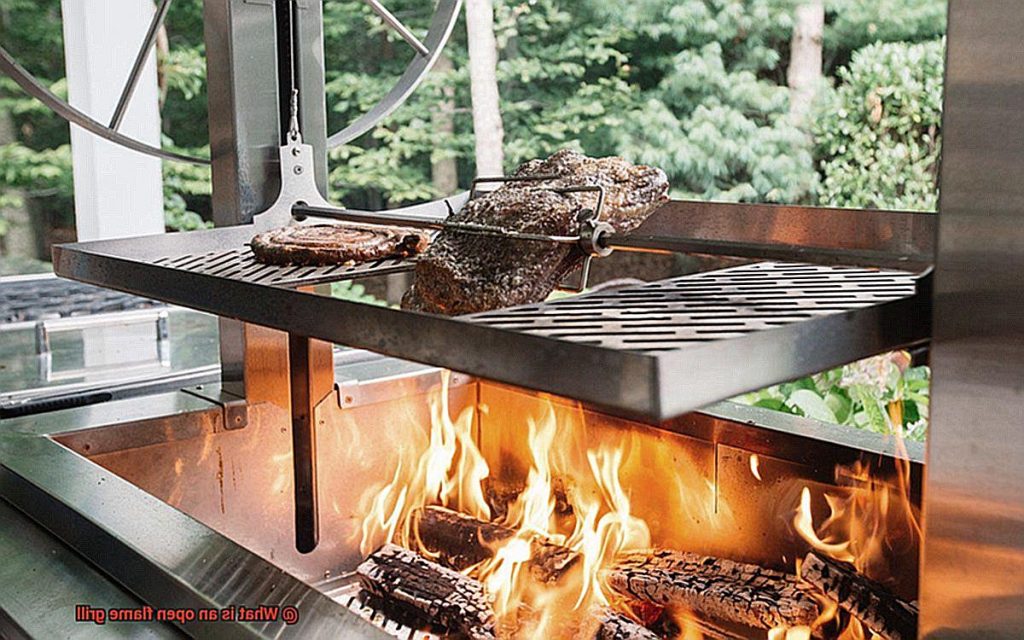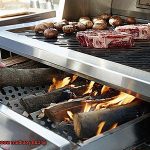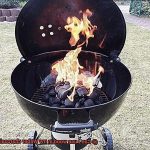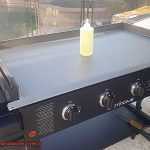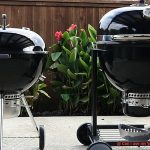Do you ever catch a whiff of barbecue in the air and instantly feel your mouth water? Are you someone who can’t resist the flavor of perfectly grilled meats and veggies? If so, then you’re definitely familiar with the open flame grill.
At its core, an open flame grill is a cooking device that uses fire as its heat source to cook food. This method has been around for centuries, dating all the way back to when humans first discovered how to harness fire for cooking.
But there’s something truly special about outdoor grilling. The sound of sizzling steaks on a hot grill, the sight of flames dancing around your food, and the taste of those smoky flavors – it’s no wonder that grilling has become such a beloved pastime all over the world.
So what exactly sets an open flame grill apart from other cooking methods? In this post, we’ll explore everything you need to know about this traditional technique. From its unique features to why it’s such a popular choice among grilling enthusiasts, we’ve got you covered. So get ready to dive into the exciting world of open flame grilling.
Contents
Types of Fuel Used for Open Flame Grilling
Open flame grilling is an age-old cooking method that has been enjoyed by people all over the world for centuries. The type of fuel used for open flame grilling can make a significant difference in the flavor and overall quality of the food being cooked. Here are five sub-sections that explain the different types of fuel used for open flame grilling.
Wood: A Traditional Choice
Wood is one of the most traditional fuels used for open flame grilling. It can add a smoky flavor to the food that cannot be replicated by other types of fuel. Different types of wood, such as hickory, mesquite, and oak, can also impart distinct flavors to the food being cooked. However, using wood as fuel requires more attention and skill than other types of fuel. It needs proper airflow and temperature control to achieve the desired results.
Charcoal: The Classic Choice
Charcoal is another popular fuel option for open flame grilling. It is made by burning wood in the absence of oxygen, resulting in charred remains that are then used as fuel. Charcoal provides a smoky flavor to the food being cooked and is often preferred by barbecue enthusiasts for its unique taste. However, it takes longer to light than other types of fuel and requires more clean-up after cooking.
Propane: The Convenient Choice
Propane is a convenient fuel option for open flame grilling because it is readily available and easy to use. It produces minimal smoke and soot, making it ideal for those who want to grill quickly without having to worry about lighting coals or wood. However, some people argue that propane doesn’t produce the same flavor as wood or charcoal.
Natural Gas: The Versatile Choice
Natural gas is similar to propane in terms of convenience, but it can be hooked up to a gas line instead of relying on a tank. It provides consistent heat and is ideal for those who want to grill quickly without having to worry about lighting coals or wood. It’s also a cleaner and more cost-effective option than charcoal and wood. However, like propane, some people argue that it doesn’t provide the same smoky flavor as wood or charcoal.
Pellets: The Modern Choice
Pellets are a relatively new fuel option for open flame grilling. They are made from compressed sawdust and provide a consistent heat source with minimal ash production. Pellets come in a variety of flavors, such as hickory, mesquite, and apple, to add unique taste profiles to the food being cooked. Pellet grills are also incredibly versatile and can be used for smoking, roasting, and baking.
In conclusion, the type of fuel used for open flame grilling depends on personal preference and desired flavor profile. Each fuel option has its own unique benefits and drawbacks that should be taken into consideration when choosing how to grill.
Benefits of Open Flame Grilling
If you’re a fan of this method, you already know that nothing compares to the taste of food cooked over an open flame. But let me share with you some additional reasons why open flame grilling is a popular choice for outdoor cooking.
First and foremost, one of the main benefits of open flame grilling is the unique flavor that it imparts to food. The high heat produced by the flames creates a sear on meat, which seals in the juices and flavors, resulting in a delicious smoky taste that cannot be replicated by other cooking methods. Each fuel source, whether it’s wood, charcoal, propane, or natural gas, provides its own distinct flavor profile, giving you endless possibilities to experiment with different tastes and find your perfect match.
But flavor isn’t the only benefit of open flame grilling. Another advantage is its versatility. With an open flame grill, you can cook just about anything – from meats to vegetables and even fruit. The high heat produced by the flames allows you to cook quickly and evenly, resulting in perfectly cooked meals every time. Plus, the ability to cook a wide variety of foods makes it a great choice for those who enjoy hosting outdoor gatherings or want to expand their culinary repertoire.
Open flame grilling is also a healthier cooking method compared to others such as frying or baking. When food is grilled over an open flame, excess fat drips off the food, resulting in lower calorie meals. Additionally, grilling allows you to cook with minimal added oils or fats, which can help reduce your intake of unhealthy fats. This makes it a great option for those who want to enjoy delicious food without sacrificing their health.
Lastly, open flame grilling provides a great way to spend time with friends and family while enjoying the outdoors. Grilling outdoors creates a relaxed atmosphere where everyone can gather around and enjoy each other’s company while cooking and eating delicious food. Plus, it’s a great way to get some fresh air and soak up some vitamin D.
How to Properly Use an Open Flame Grill
Grilling on an open flame is an art that requires technique and patience. Whether you’re a beginner or an experienced griller, following these tips will help you master the open flame grill and cook delicious meals every time.
Start with a clean grill
Before starting your grill, use a stiff wire brush to scrape away any leftover food particles or debris from the grates. This not only ensures that your food doesn’t stick to the grill but also helps prevent flare-ups that can cause burns or fires.
Preheat your grill
Preheating your grill is crucial for achieving the perfect sear on your meats and vegetables. A good rule of thumb is to preheat the grill for at least 10-15 minutes on high heat before reducing the temperature to medium or low and adding your food.
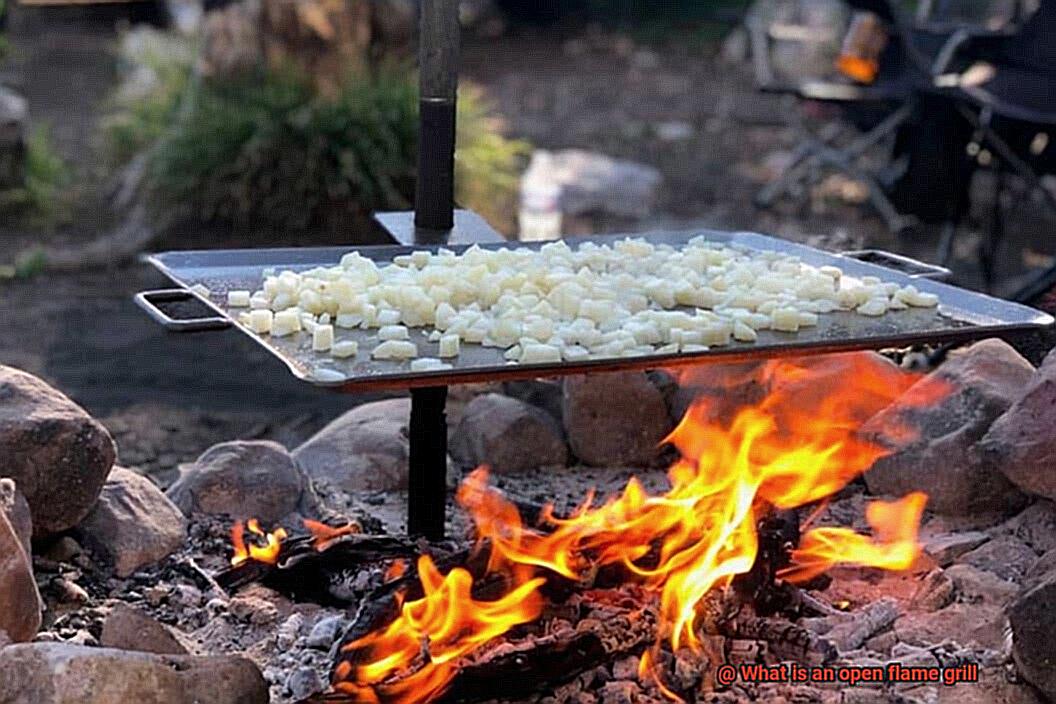
Know your cooking methods
Direct heat is ideal for foods that cook quickly, such as thin cuts of meat and vegetables. Indirect heat, on the other hand, is best for foods that require longer cooking times, such as whole chickens or roasts. Knowing these methods will help you choose the right technique for each meal.
Control your temperature
Controlling the temperature of your grill is essential for cooking your food evenly and preventing it from burning. Adjusting the vents on the grill or moving the food closer or further away from the flames can help you maintain the right temperature. Keep a close eye on your food while it’s cooking and flip it frequently to ensure that it cooks evenly on both sides.
Know when your food is done
Knowing when your food is cooked to perfection is key to achieving delicious results every time. Use a meat thermometer to ensure that your meats are cooked to the appropriate temperature for safety. Also, be sure to let your food rest for a few minutes before serving, allowing the juices to redistribute throughout the meat for a more flavorful and tender result.
Clean your grill thoroughly
After using your grill, it’s important to clean it thoroughly. This not only helps to prevent bacteria growth but also ensures that your grill will last for many years to come. Use a wire brush to scrape off any remaining food particles from the grates, and wash them with warm soapy water. Clean the exterior of your grill with a mixture of vinegar and water or a specialized grill cleaner.
Techniques for Getting Perfectly Cooked Food on an Open Flame Grill
Cooking on an open flame grill is an experience that evokes feelings of summer, relaxation, and mouth-watering aromas wafting through the air. However, achieving perfectly cooked food can be a daunting challenge for even the most experienced grill masters. Fear not, we have compiled a list of techniques that will help you create delicious and evenly cooked meals every time you fire up your grill.
Preheat the Grill
The first step to getting perfectly cooked food on an open flame grill is to preheat it. Ensure that you give your grill enough time to heat up before placing food on it. This allows the grill grates to heat up, helps prevent sticking, and ensures even cooking.
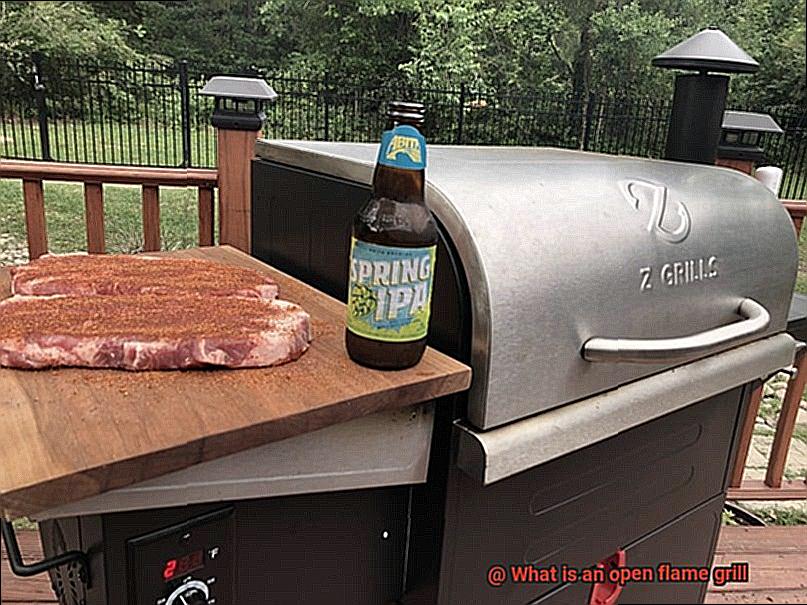
Control the Heat
Controlling the heat is critical to achieving great results on an open flame grill. Too much heat can cause food to burn, while too little heat can result in undercooked food. Adjusting the distance between the food and flames is a great way to find the perfect temperature for your meal.
Use Direct and Indirect Heat
Using direct and indirect heat is essential when cooking on an open flame grill. Direct heat sears meat and creates beautiful grill marks, while indirect heat is ideal for slow-cooking larger cuts of meat. Experiment with both techniques to find what works best for you.
Don’t Overcrowd the Grill
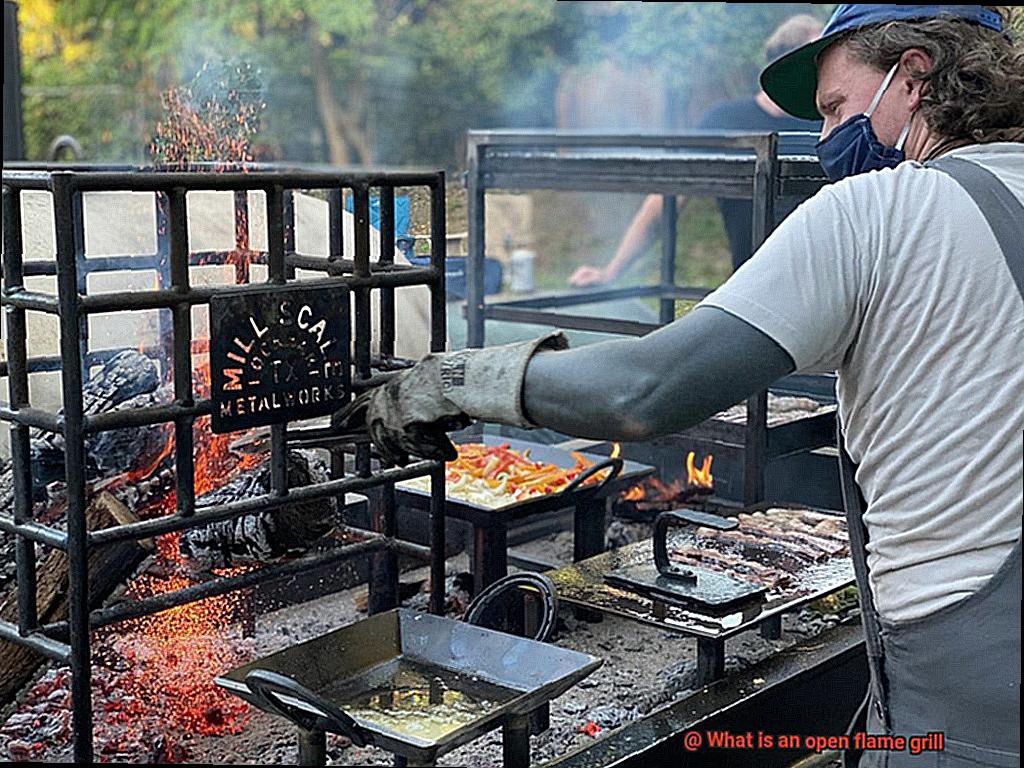
Overcrowding the grill can lead to uneven cooking, making it difficult to control the temperature. It’s important to give each piece of food enough space on the grill and cook in batches if necessary.
Use a Meat Thermometer
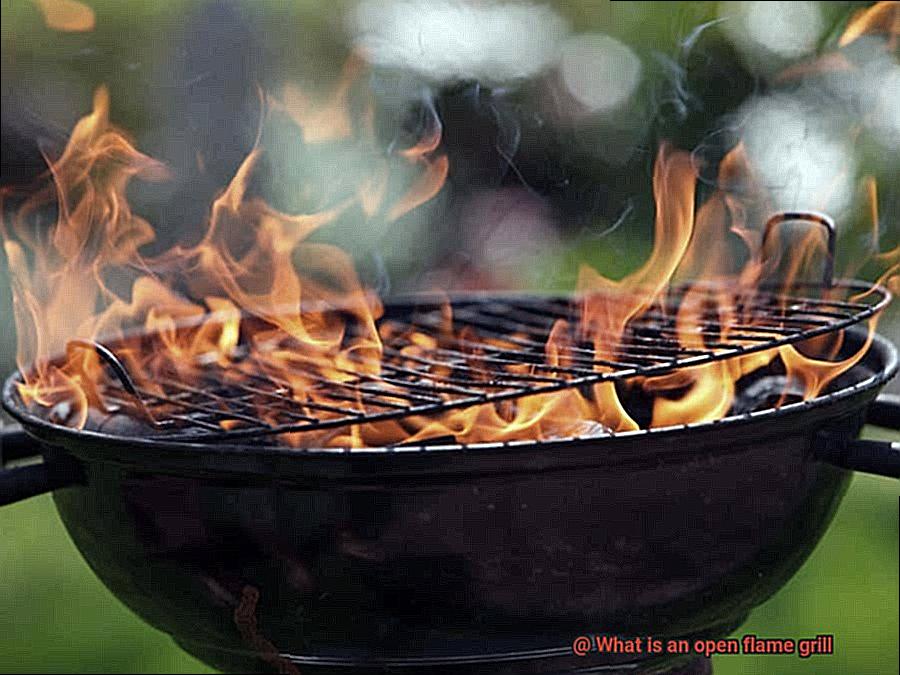
Using a meat thermometer is a foolproof way to ensure that meats are properly cooked. This will help you avoid undercooking or overcooking your food and achieve perfectly cooked meat every time.
Common Mistakes When Using an Open Flame Grill
Let’s talk about some common mistakes people make when using an open flame grill. As an expert on the topic, I’ve done my research and have some tips to help you avoid these pitfalls and become a true grill master.
First things first – preheat that grill. This is a crucial step in grilling, yet it’s often overlooked. You want those grates to be piping hot and ready to sear your food to perfection. So, give your grill at least 10-15 minutes to heat up before adding any food. Trust me, it’ll make all the difference.
Another mistake that many people make is overcrowding the grill. We get it – you want to cook everything at once and get it all done quickly. But, this can lead to uneven cooking and even flare-ups. Instead, leave some space between each piece of food to ensure that everything cooks evenly. Plus, you’ll have more control over the heat and won’t risk burning your food.
Speaking of flare-ups, using too much oil or marinade can also cause them. It might seem like more is better, but trust me – it’s not. Just use enough oil or marinade to coat the food and add flavor. This will prevent flare-ups and give you perfectly cooked food every time.
Finally, don’t forget to clean your grill after each use. Yes, it’s not the most exciting part of grilling, but it’s important for both safety and food quality. Leftover food particles can build up on the grates and cause sticking or even create a breeding ground for bacteria. So, grab a grill brush and some warm soapy water and give those grates a good scrubbing.
Tips and Tricks for Getting the Most Out of Your Open Flame Grill
Here are some tips and tricks for getting the most out of your open flame grill:
Start with clean grates
Your grates should be free from any leftover debris or food from previous cooking sessions. Use a wire brush or grill scraper to clean them before cooking. This will prevent the transfer of unwanted flavors to your food and ensure that it cooks evenly.
Preheat your grill
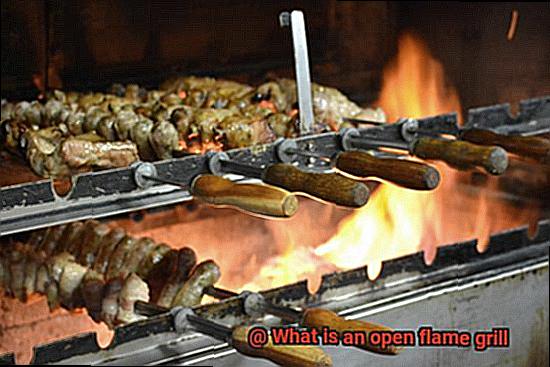
Preheating your grill is crucial for achieving even cooking temperatures and preventing food from sticking to the grates. Allow your grill to preheat for at least 10-15 minutes before placing any food on it.
Use the right fuel
The kind of fuel you use can make a big difference in the flavor of your food. Charcoal and wood are popular options that provide unique flavors and aromas to your food. Gas grills are convenient but lack the smoky flavor that comes with charcoal or wood.
Control the heat
Controlling the heat on an open flame grill can be challenging, but it’s essential for creating perfectly cooked meals. Use different areas of the grill to create zones of high and low heat. A firebox or adjusting the airflow can regulate the temperature of your grill.
Experiment with smoke
Adding wood chips or chunks to your grill can infuse your food with delicious smoky flavors. Experiment with different types of wood, such as hickory, mesquite, or applewood, to find your favorite flavors.
Use a meat thermometer
Using a meat thermometer is essential for ensuring that your food is cooked to the proper temperature. This is especially important when using an open flame grill since the heat can be unpredictable.
Get creative
Don’t be afraid to try new things. Grilling is all about experimentation. Whether it’s adding different seasonings or trying new cooking techniques, get creative with your open flame grill. You never know what delicious dish you might come up with.
Different Ways to Flavor Food on an Open Flame Grill
Grilling on an open flame grill is not just about cooking your food. It’s about creating a culinary experience that tantalizes your taste buds and satisfies your cravings. To achieve this, you need to know the different ways to flavor food on an open flame grill. Here are five sub-sections that will help you do just that:
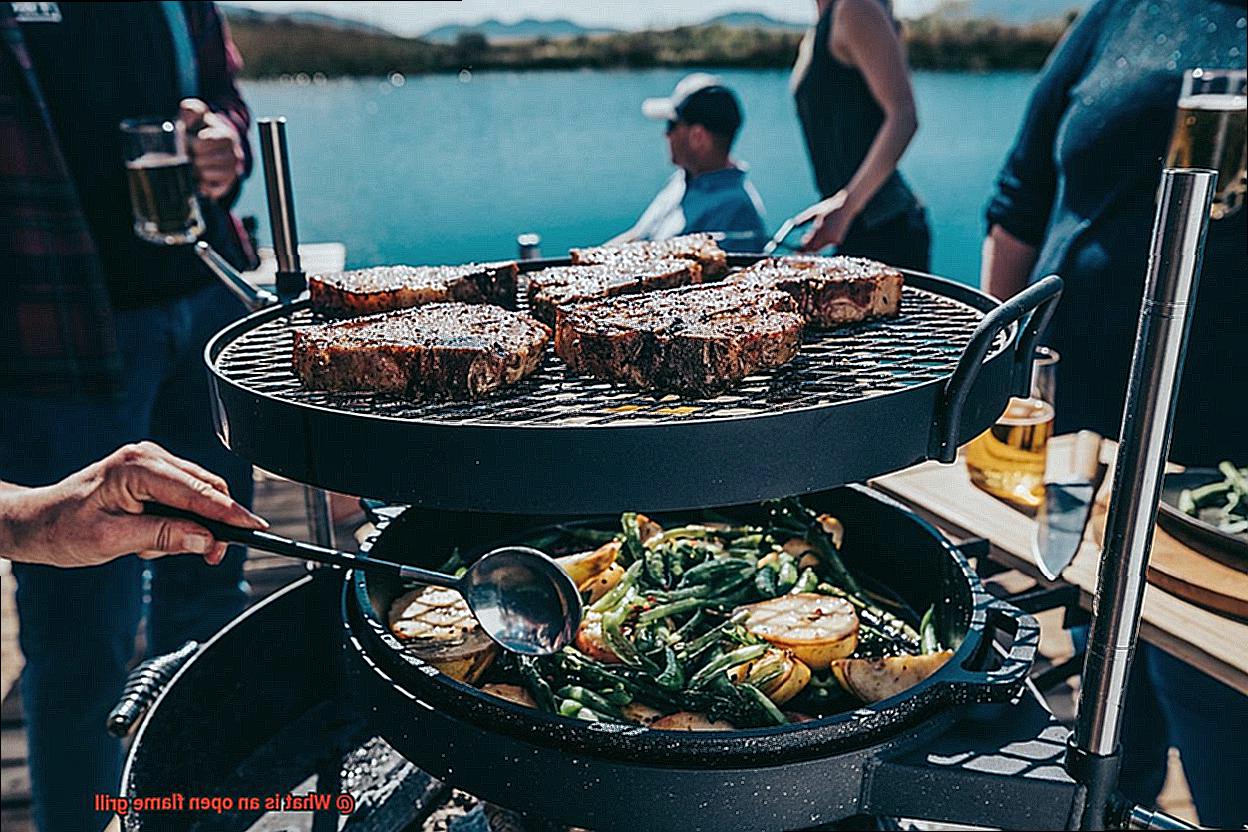
Marinades
Marinades are a great way to add flavor and moisture to meat. They are also excellent for tenderizing tougher cuts of meat. To make a marinade, you can use a pre-made mixture or make your own by blending oil, acid (vinegar or citrus juice), herbs, and spices. Soak your meat in the marinade for at least 30 minutes before grilling to infuse it with the flavor.
Rubs
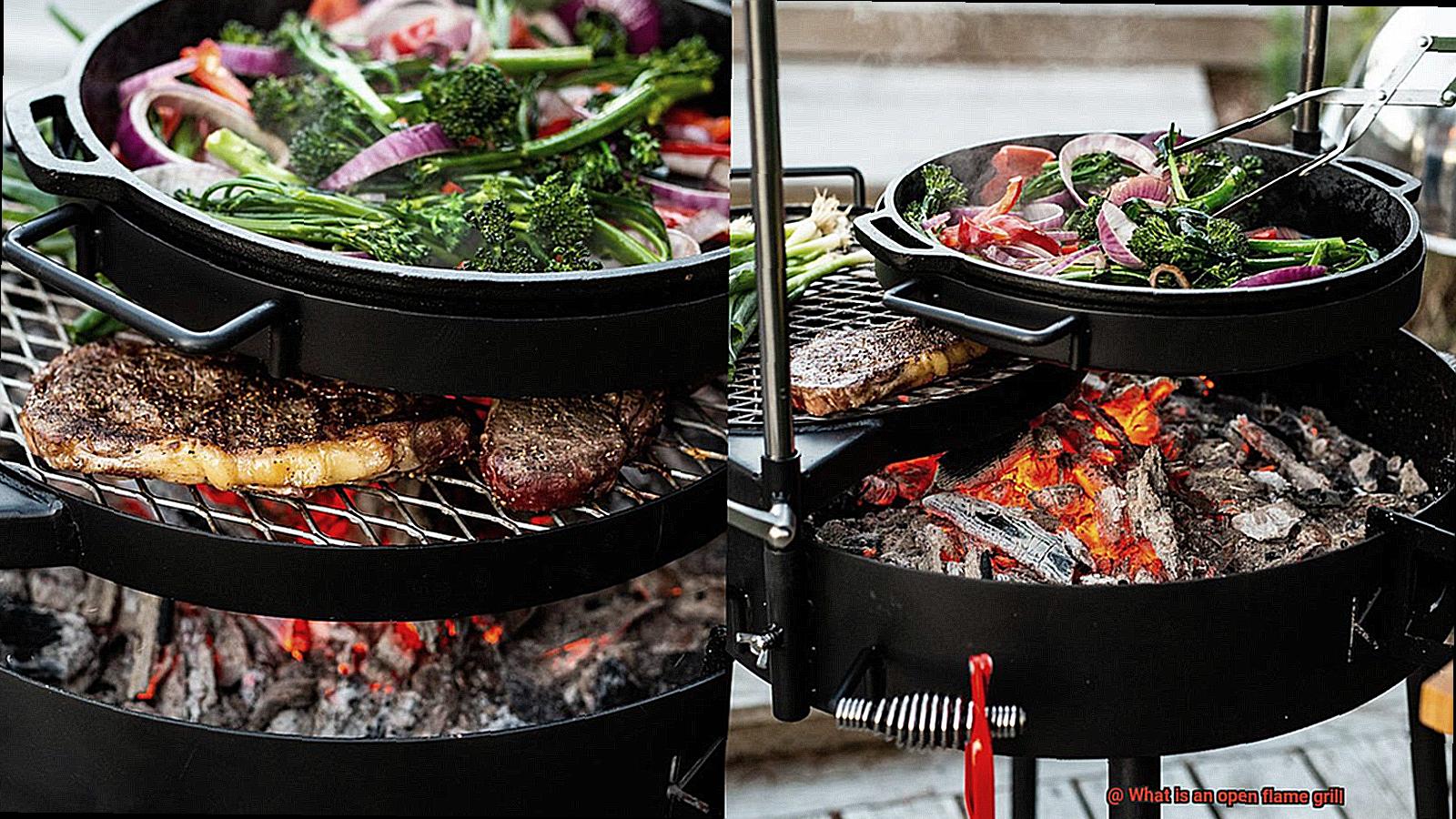
If you want a flavorful crust on the outside of your meat while keeping it moist and juicy on the inside, then rubs are the way to go. Rubs are dry mixtures of herbs, spices, sugar, and salt that you pat onto the surface of your meat before grilling. Rubs can be customized to suit your taste preferences, making them an excellent option for experimentation.
Wood Chips
One of the best ways to add a smoky flavor to your food is by using wood chips or chunks on your open flame grill. Different types of wood chips will impart different flavors onto the food. For example, hickory wood chips will give a smoky taste while applewood chips will give a sweeter taste. Soak the wood chips in water for at least 30 minutes before using them on the grill. Then, place them directly on top of the hot coals or in a smoker box if using a gas grill.
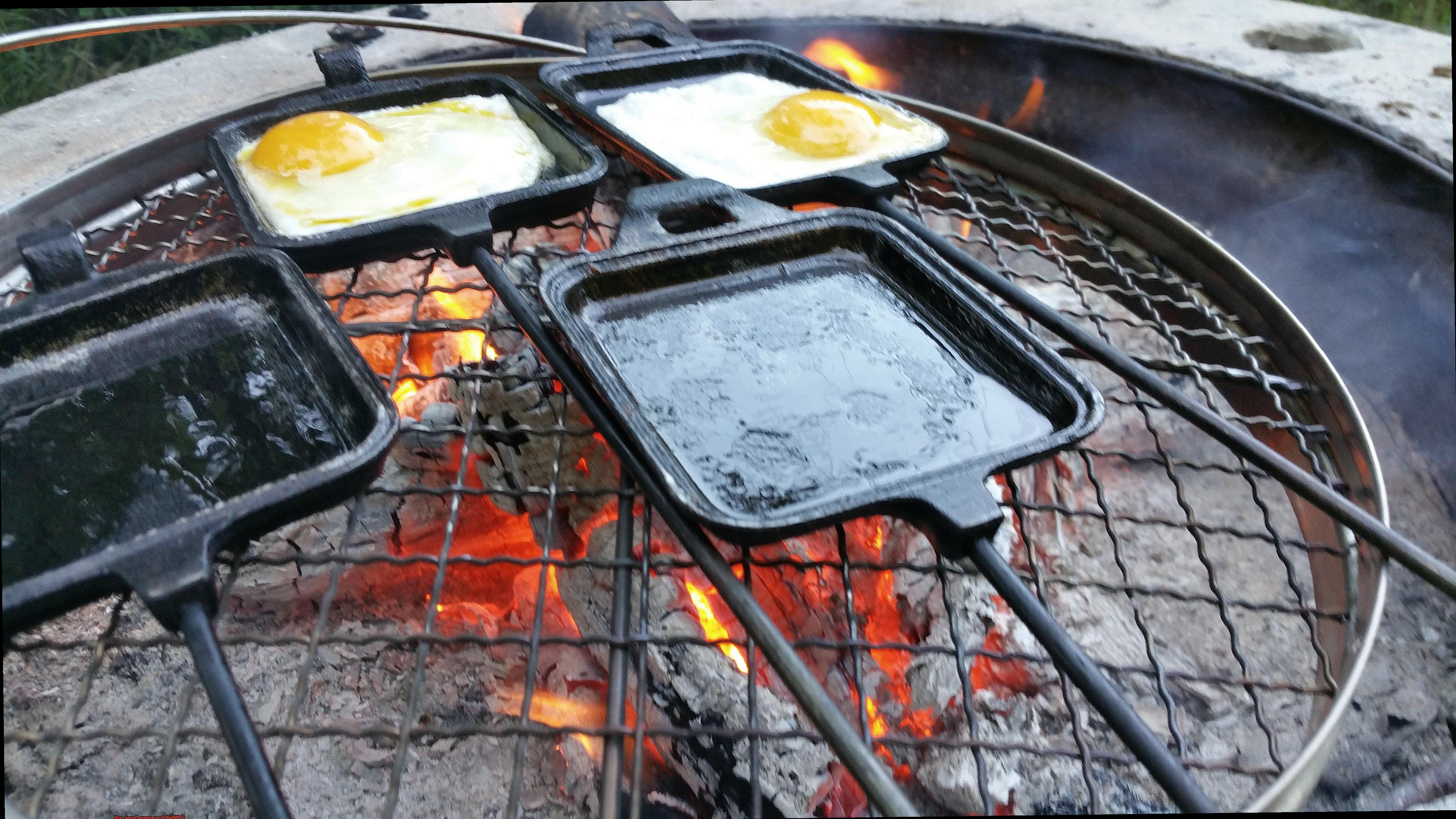
Hot Sauce
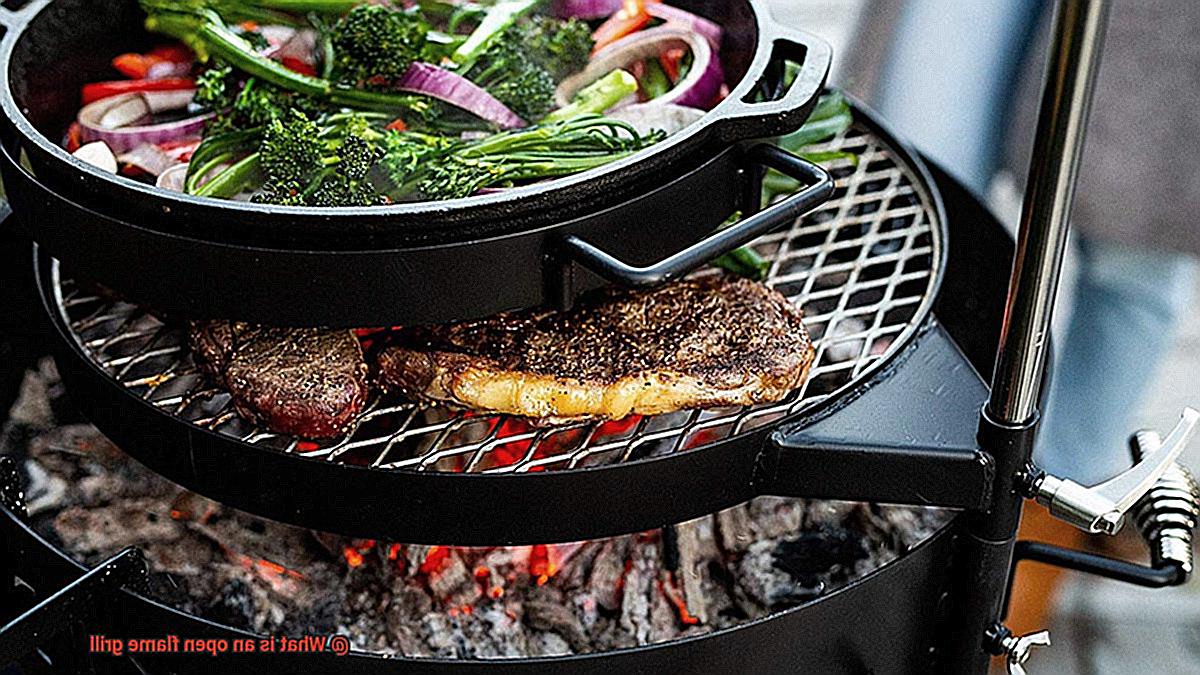
Adding heat to your food is another way to take it up a notch. You can use hot sauces or chopped peppers to add spice to your food. Brushing hot sauce onto your meat during grilling or adding diced jalapenos to your burger patty before cooking can give your dish a fiery flavor. Be careful not to overdo it, though, since the heat can overpower the other flavors.
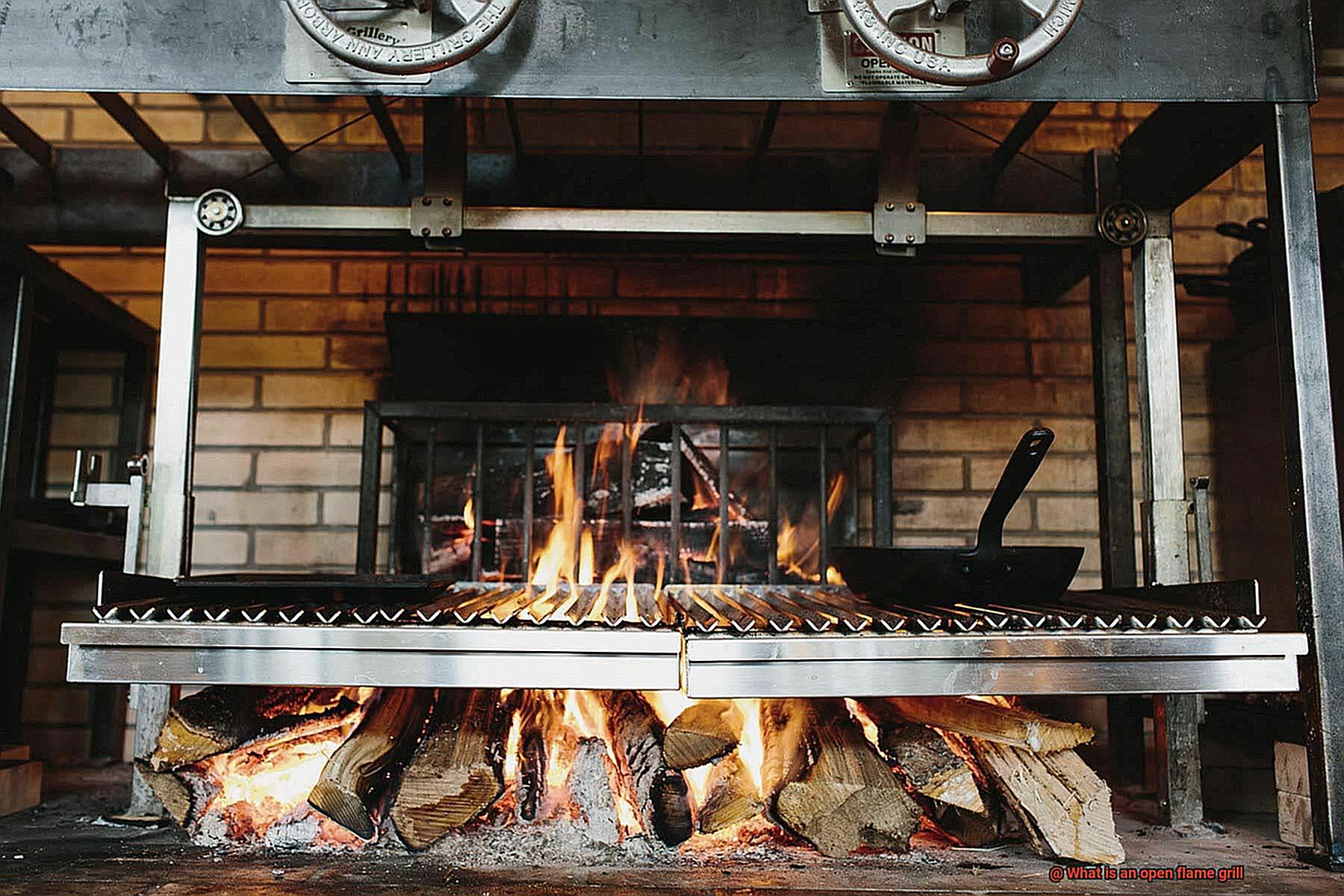
Simple Seasonings
Sometimes, the simplest things are the best. Salt and pepper are classic seasonings that can enhance the natural flavors of your food without masking them. Don’t forget to season your food before grilling for added depth of flavor.
Safety Precautions When Using an Open Flame Grill
It’s crucial to prioritize safety when using an open flame grill to avoid any potential accidents or injuries. Here are some important safety precautions to keep in mind:
- Location: The first thing to consider when using an open flame grill is the location. Always choose a safe location for your grill, away from flammable objects like trees, buildings, and furniture. Ensure that the grill is on a level surface so that it won’t tip over.
- Preparation: Before you start grilling, make sure the grill is clean and in good working order. Check the propane tank or gas line for leaks, and inspect the grill grates for any debris or buildup that could cause a fire.
- Clothing: The right clothing matters when grilling. Wear appropriate clothing when grilling, avoiding loose-fitting clothes that could catch on fire. Closed-toe shoes are also crucial to protect your feet.
- Tools: Use long-handled tools to keep your hands away from the flames and prevent burns. Additionally, use oven mitts or gloves to protect your hands when handling hot items.
- Fire Extinguisher: Keep a fire extinguisher handy in case of an emergency. It’s vital to know how to use it before starting to grill.
- Never leave it unattended: Always keep an eye on the grill while it’s in use. Leaving it unattended can lead to accidents or injuries.
ckCL1SH-7Zw” >
Conclusion
In conclusion, an open flame grill is a type of cooking appliance that uses direct heat from an open flame to cook food.
It’s a popular choice for outdoor cooking and provides a unique flavor profile that can’t be replicated with other cooking methods. Whether you’re grilling up burgers and hot dogs or experimenting with new recipes, an open flame grill is a versatile and reliable tool in any home chef’s arsenal.
So why not fire up the grill and try something new today?

